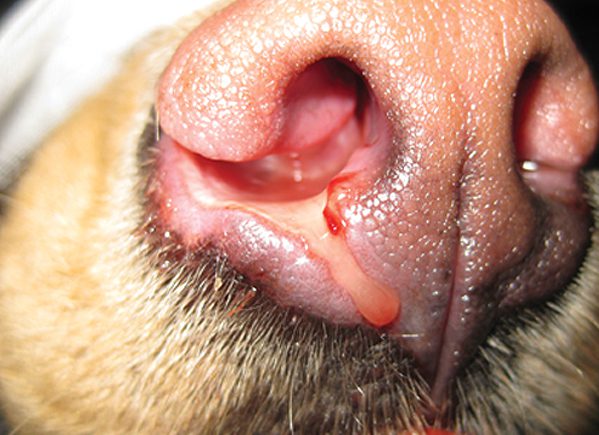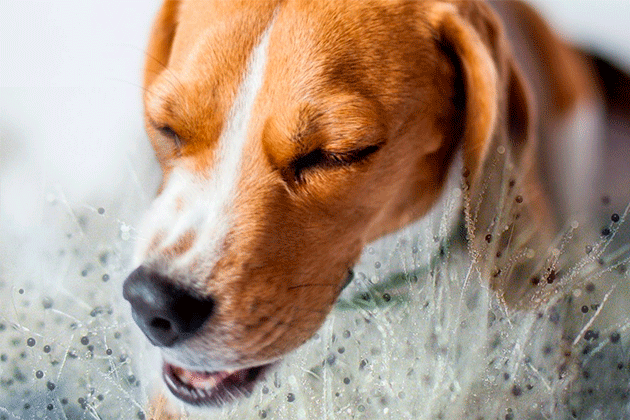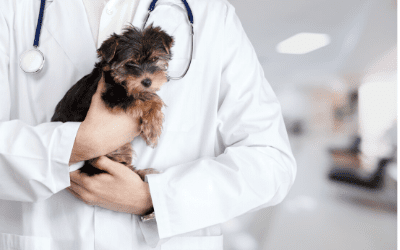
Aspergillosis in pets

Aspergillosis is a widespread fungal disease that occurs in animals, birds, and humans and poses some health risks.
The causative agent of aspergillosis
The causative agent of aspergillosis can be attributed to opportunistic mold fungi of the genus Aspergillus. They can be in the soil, rotten wood, rotting plants, wet hay and straw, wet bedding, grain, flour, cereals and dry food, water, and grow in damp and poorly ventilated areas – bathrooms and basements. The spores are persistent in the environment. Most often, birds get sick, and a little less often – domestic animals and humans. The most susceptible to the disease are older animals with autoimmune diseases, diabetes mellitus, respiratory infections, as well as animals of brachiocephalic breeds and German Shepherds, Rottweilers, Retrievers. Aspergillosis mainly affects the respiratory system. Infection occurs through contaminated environment, household items, feed, inhalation of dust. Aspergillosis is not transmitted by contact.
Symptoms of the disease
Spores penetrate the nasal cavity and attach to the epithelium, where the hyphae of the fungus grow, destroying it. The course of the disease can be different depending on where the fungus settles. It can be the bronchi and lungs, the nasal cavity, and in cats there is also a sinoorbital form, in which the sinuses and eye orbits are affected. A severe form of the disease is accompanied by destruction of the bones of the nose, palate, frontal sinuses, and / or orbit of the eye, even the brain. With generalized aspergillosis, various internal organs can be affected. Symptoms to look out for: Sneezing
- Cough
- Unilateral or bilateral nasal discharge. Character may vary from watery to purulent with secondary bacterial infection
- Nosebleeds, often quite profuse
- Fallout of the third century
- Leaks from the eyes
- Formation of tumors in the muzzle
- Enlarged lymph nodes
- Soreness in the muzzle
- Depressed state
- Fever
- Decreased appetite
- Weight loss
- Neurological disorders
The above signs can also be observed in other respiratory infections, so it is necessary to carry out diagnostics to detect aspergillosis and prescribe the right therapeutic, and sometimes surgical care. Diagnosis of aspergillosis Any visit to the doctor begins with the collection of an anamnesis – the history of the life and illness of the pet. It is important for a doctor to know in what conditions a cat, dog or bird lives, what it eats, whether there are chronic or immunodeficiency conditions. This will save time and facilitate diagnosis. To clarify the diagnosis, the following methods and studies are often used:
- General and biochemical blood tests to assess the general condition of the body, exclude other pathologies of internal organs that can occur with similar symptoms;
- Flushing from the eyes and nose;
- X-ray of the chest, neck and head. To visualize the integrity of bone structures, the exclusion of contrasting foreign bodies;
- US, CT, MRI
- Rhino- or tracheobronchoscopy. They are carried out under anesthesia. Visually using a flexible tube with a camera at the end examine the structure of the respiratory tract.
- Simultaneously with this procedure, altered tissues can be taken for cytological, histological examination, bacterial and fungal cultures.
Treatment
After confirming the diagnosis of aspergillosis, a long-term treatment is necessary, which most often takes several months. With extensive growths of the fungus, surgical excision of tissues is required. This may be the removal of part of the nose with bone tissue or the orbit of the eye along with the eyeball, but most often this is an extreme measure in animals in severely advanced cases. Otherwise, systemic antifungal therapy is used. Use one drug or a combination of them. Treatment is usually very long. To control the effectiveness of the prescribed drugs, repeated crops are carried out. With two negative results, treatment is stopped and the animal is considered recovered.
Prevention
There is no specific prophylaxis for aspergillosis. However, the tasks of the owner:
- Monitor the condition of your pet, regularly conduct medical examinations, hygiene and preventive procedures.
- Choose quality food or prepared food that will not be contaminated with the fungus.
- Keep the apartment and enclosures clean, use disinfectants from time to time.
- If you find any symptoms of malaise in your pet, you should contact the veterinary clinic, and in no case do not self-medicate.





